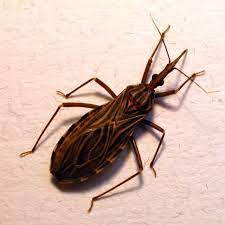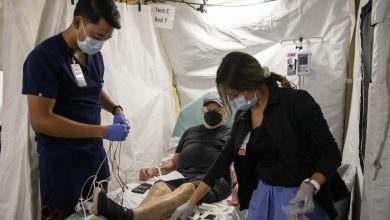Kissing Bugs in California: Hidden Danger Lurking in Your Backyard

When most Californians think about threats in their backyards, they may picture rattlesnakes, black widow spiders, or even coyotes. Yet, another danger often goes unnoticed—a small insect that hides in the shadows, waiting to feed at night. Known as kissing bugs, these blood-sucking insects are more than just a nuisance. They pose serious health risks, including the possibility of spreading Chagas disease, a potentially life-threatening illness.
You need to know about kissing bugs in California—their habits, the risks they pose, how to identify them, and what you can do to protect yourself and your family.
What Are Kissing Bugs?
Kissing bugs, scientifically known as triatomine bugs, are nocturnal insects that feed on the blood of humans and animals. Their nickname comes from their peculiar habit of biting around the mouth and eyes of sleeping individuals.
While the bite itself may not always be painful, the real danger lies in what they leave behind. Some kissing bugs carry the parasite Trypanosoma cruzi, the organism responsible for Chagas disease. Unlike mosquitoes that transmit diseases directly through their saliva, kissing bugs spread the parasite through their feces. If the bug defecates near the bite wound, and the person accidentally rubs it into their skin or eyes, infection may occur.
Kissing Bugs in California: Are They Really Here?
Many people assume that kissing bugs are limited to Central and South America. However, studies confirm that kissing bugs are present in California and other southwestern U.S. states.
The most common species found in California is the Western bloodsucking conenose bug (Triatoma protracta). These bugs are typically spotted in rural or semi-rural environments but can sometimes be found in suburban areas as well.
While the risk of contracting Chagas disease in California is considered lower than in Latin America, confirmed cases of infected bugs have been reported. This makes awareness and prevention absolutely critical.
Identifying Kissing Bugs in California
Because not all insects that resemble kissing bugs are dangerous, it’s important to know how to identify them correctly. Here are some distinguishing features:
- Size: Adult kissing bugs measure between ½ inch to 1 inch in length.
- Color: They are usually dark brown or black with orange, yellow, or red markings along the edges of their bodies.
- Shape: They have an elongated, cone-shaped head with a prominent, straight proboscis for piercing skin.
- Wings: Adults are winged and capable of flying short distances.
- Behavior: They are nocturnal and often hide during the day in cracks, under porches, or inside animal nests.
It’s worth noting that many Californians confuse kissing bugs with harmless look-alikes such as the assassin bug or wheel bug. Unlike their dangerous counterparts, these look-alikes do not transmit disease to humans.
Where Do Kissing Bugs Hide in California?
Kissing bugs in California are often associated with environments that provide them easy access to food sources (blood meals) and shelter. Some common hiding places include:
- Under porches, decks, and woodpiles
- In rodent nests, burrows, or dens of wild animals
- In dog kennels or chicken coops
- Cracks in walls, foundations, or roofing materials
- Beneath outdoor furniture or clutter
Because they are drawn to carbon dioxide and body heat, kissing bugs are notorious for entering homes at night in search of a meal.
Health Risks: The Chagas Disease Connection
The most concerning aspect of kissing bugs in California is their potential to transmit Chagas disease. Here’s what you need to know about this condition:
- Cause: Chagas disease is caused by the parasite Trypanosoma cruzi.
- Transmission: Infection occurs when kissing bug feces containing the parasite enters the body through mucous membranes, open wounds, or by rubbing the eyes.
- Symptoms (Acute Phase): Fever, fatigue, rash, swollen eyelids, and body aches. These early symptoms can mimic flu-like illnesses and often go undiagnosed.
- Chronic Phase: If untreated, the infection can become chronic, leading to serious complications years later, such as heart disease, arrhythmias, digestive problems, and even sudden cardiac arrest.
- Treatment: Medications like benznidazole or nifurtimox are available but are most effective when administered early.
The Centers for Disease Control and Prevention (CDC) estimates that over 300,000 people in the United States may be living with Chagas disease, many of whom were infected abroad. However, domestic cases linked to kissing bugs in California and other states are increasingly being documented.
How Common Are Infected Kissing Bugs in California?
Studies have revealed that some populations of kissing bugs in California do carry Trypanosoma cruzi. However, the infection rate in bugs varies widely depending on location. While it’s difficult to determine the exact risk, experts emphasize caution since even a single infected bug poses potential danger.
In rural California, especially areas with a high presence of woodrats and other wildlife, kissing bugs thrive. These wild animals act as reservoirs for the parasite, increasing the chance that local kissing bugs carry it as well.
Signs of Kissing Bug Infestation
Because these insects are stealthy, infestations are not always obvious. Still, there are a few signs homeowners in California should look for:
- Unexplained bites around the mouth or eyes
- Droppings or smears around sleeping areas, particularly near walls or bedding
- Shed skins or wings left behind as bugs grow and molt
- Sightings of live bugs crawling at night or flying indoors
If you notice these signs, it’s important to contact pest control professionals experienced in handling kissing bugs.
Protecting Your Home from Kissing Bugs in California
Prevention is the best defense against kissing bugs. Here are effective strategies for Californians:
1. Seal Entry Points
- Close cracks in walls, windows, doors, and foundations.
- Install fine-mesh screens on windows and doors.
- Seal gaps around utility lines, roof joints, and vents.
2. Eliminate Outdoor Hiding Spots
- Remove woodpiles, brush, and debris near the home.
- Keep pet housing (kennels, doghouses, chicken coops) away from living spaces.
- Reduce rodent infestations, as they attract kissing bugs.
3. Protect Sleeping Areas
- Use bed nets if living in high-risk rural areas.
- Move beds away from walls and avoid placing bedding directly on the floor.
4. Use Lighting Strategically
Kissing bugs are attracted to light. Minimize outdoor lighting at night, or switch to yellow bulbs that are less attractive to insects.
5. Manage Pets Safely
Pets can be bitten by kissing bugs and may also bring them indoors. Regularly clean kennels, check bedding, and avoid leaving food bowls outside overnight.
What to Do If You Find a Kissing Bug
If you suspect you’ve found a kissing bug in California:
- Do not touch it with bare hands. Use gloves, tweezers, or a container.
- Capture the bug carefully. Place it in a sealed plastic bag or jar.
- Contact local health authorities or entomologists. They can confirm the species and check if it carries Trypanosoma cruzi.
- Do not crush the bug indoors. This may spread its feces and increase risk of exposure.
Myths vs. Facts About Kissing Bugs in California
Because kissing bugs are not widely discussed in mainstream media, myths and misinformation abound. Let’s clear up some common misconceptions:
- Myth 1: “Kissing bugs only live in South America.”
Fact: Multiple species are found across the U.S., including California. - Myth 2: “Every kissing bug carries Chagas disease.”
Fact: Not all are infected, but the risk is real and should not be ignored. - Myth 3: “They bite only humans.”
Fact: Kissing bugs also feed on pets and wild animals. - Myth 4: “Their bites are always painful.”
Fact: Many bites are painless, which is why they often go unnoticed.
The Future of Kissing Bugs in California
Climate change, urban expansion, and increasing interaction between humans and wildlife could expand the range of kissing bugs in California. Warmer temperatures create favorable conditions for these insects, while construction in rural areas brings people closer to their habitats.
Public health experts stress the need for continued surveillance and research on kissing bugs in California to better understand their impact on human health.
Conclusion
Kissing bugs may seem like just another creepy-crawly insect, but their potential to spread Chagas disease makes them a hidden danger worth taking seriously. While not every bug is infected, the presence of kissing bugs in California highlights the importance of awareness, prevention, and caution.
By learning how to identify these insects, taking steps to secure homes and pets, and staying informed about the risks, Californians can significantly reduce their chances of encountering this threat in their own backyards.




